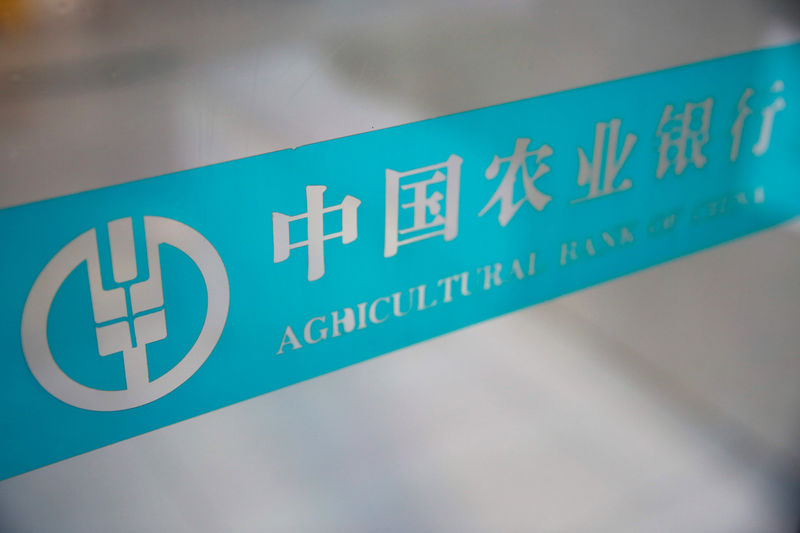By Shu Zhang and Engen Tham
BEIJING/SHANGHAI (Reuters) - Chinese banks are set to see a slowdown in lending growth in the second half of the year, having exhausted most of their annual credit quota, raising the specter of corporate defaults as financing costs climb further in the world's No.2 economy.
Beijing's crackdown on riskier lending has already stretched financing costs and hurt profit margins. Analysts estimate banks have used 80 percent of their yearly credit quota over January-June, versus the usual 60 percent, amid a regulatory push to bring shadow financing activities to the main loan book.
"Loan demand is strong throughout the whole year," said Ma Kunpeng, chief financial industry analyst at China Merchants Securities. "The core conflict in the second half is loan quota - whether banks will be able to extend more loans than they originally planned."
The country's top five lenders, including Industrial and Commercial Bank of China (ICBC) (SS:601398), China Construction Bank (SS:601939) and Agricultural Bank of China (SS:601288), will report their first-half results over the next two weeks.
China saw a 12.9 percent growth in outstanding yuan loans as of June end. Nomura's China economist Wendy Chen expects this to moderate to 12.6 percent year-on-year in the third quarter and 12.4 percent in fourth, from 13.5 percent in 2016.
China's policymakers have said the government will continue to lower overall leverage and that slower growth in broad M2 money supply, which includes demand deposits and monies held in easily accessible accounts, could be a "new normal".
The central bank has also increased checks on banks' off-balance sheet wealth management products - a key component of shadow banking credit - while the banking regulator has stepped up a crackdown on risky lending behaviors.
"Corporate defaults will rise if the availability of finance is further restricted. This could become a threat to economic growth ... especially if defaults are concentrated in labor-intensive segments like steel and coal," Moody's said.
China's economic growth showed signs of fading in July as lending costs rose, but a hard landing is unlikely with Beijing keen to ensure stability ahead of a once-in-five-years Communist Party leadership reshuffle later this year.
China's commercial banks reported higher first-half profits, while overall non-performing loans in June did not increase from March, the banking regulator said on Monday.
But analysts cautioned that slower credit growth would eventually take a toll on banks' profit margins.
MARGIN PRESSURE
Net interest margins (NIM) - the difference between interest paid and earned by banks and a key gauge of profitability - have fallen sharply in the past quarters following six successive benchmark interest rate cuts in 2014-15.
For China's top lender ICBC, the margin is forecast to narrow to 2.13 percent in 2017 from 2.21 percent last year, while CCB could report a drop of 27 basis points to 2.09 percent in 2017, Thomson Reuters data shows.
Adding to banks' cost pressures is their move to increase deposit interest rates this year to as much as 40 percent above central bank benchmark rates to lure depositors, statistics compiled by Reuters showed.
Part of the higher costs has been passed on to corporate borrowers. The price of loans as measured by the weighted average of loan interest rates rebounded to 5.67 percent in June, from 5.22 percent in September.
But that will not be sufficient to cushion the impact on near-term profits.
"The most direct impact of the regulatory crackdown is on liquidity and profitability," said Alicia Garcia-Herrero, chief Asia Pacific economist at Natixis.

"Chinese banks will find themselves in a dilemma ... with more doors shut in the shadow banking, which has been a source of profits to offset the impact on net interest income."